REINFORCED FIBERS : BEAM
The Reinforced Fibers project focused on topology optimization of the beam. Through means of computational design, the goal was to remove the maximum amount of material, while maintaining structural integrity. The aim of the workshop was to explore possible strategies of reducing material consumption through optimization of topology and reinforcement of key stress areas of structural elements.
LOAD CONDITIONS
After establishing force load and connection between slab, beams and columns, a simplified model with isolated beam geometry has been made. This allowed us to predict more accurate of force flow and key stress areas.
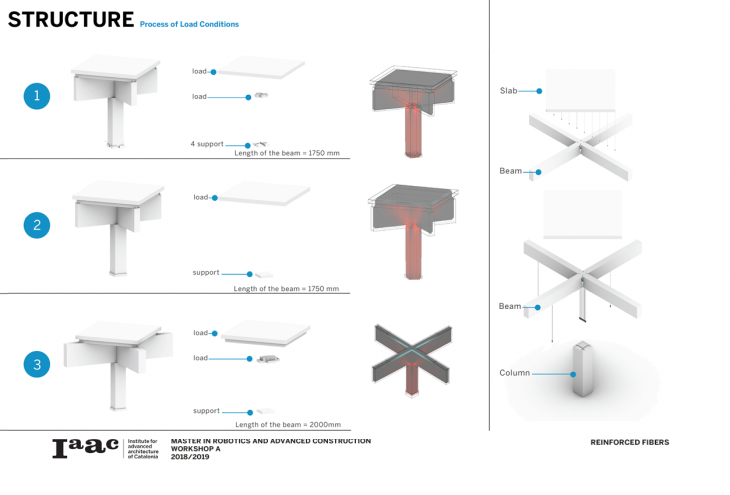

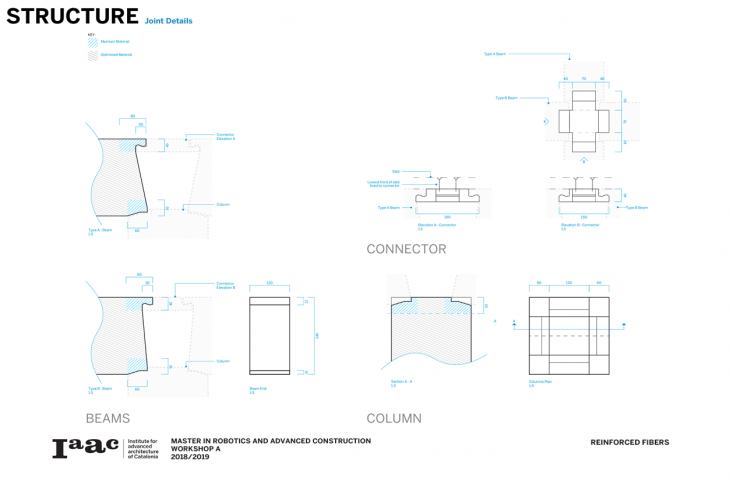
TOPOLOGY OPTIMIZATION
The topology optimization process has been carried using a plugin for grasshopper called Millipede. The solver, through iterative simulations, removed excess material from given beam geometry. Two different strategies have been tested for the process: one that established beam as a two-dimensional object and another, that operated in three dimensions. Former has been applied due to fabrication limitations. Additional density areas were added at the connection parts between beam, column and slabs to ensure that those areas would have enough material.
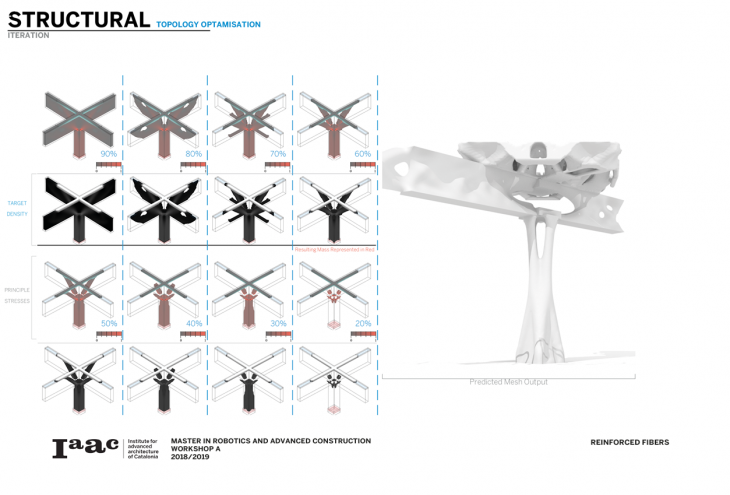
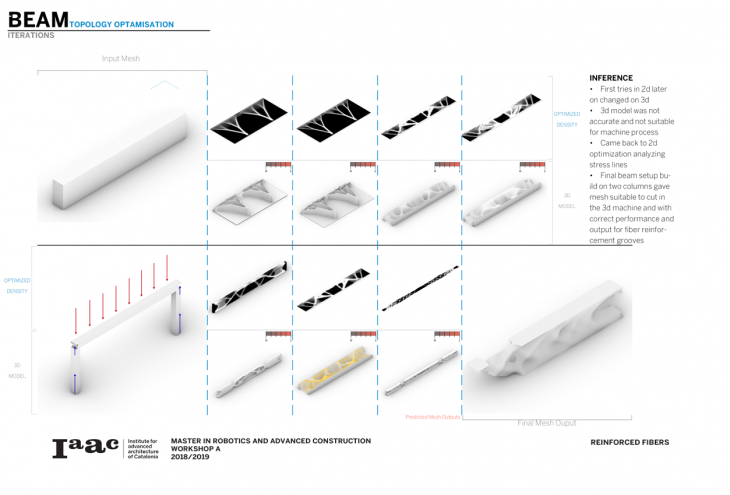
CNC MILLING
The geometry of the beam was cut using a 3-axis CNC milling machine. Milling process consisted of double-sided cutting of geometry and joinery. To keep the beam stable during both milling operations, a frame has been added to both ends of the element. To keep visual similarity of structure, horizontal finishing was applied along the beam. At the ends of the beam the joinery, to connect it with column and slab has been milled.
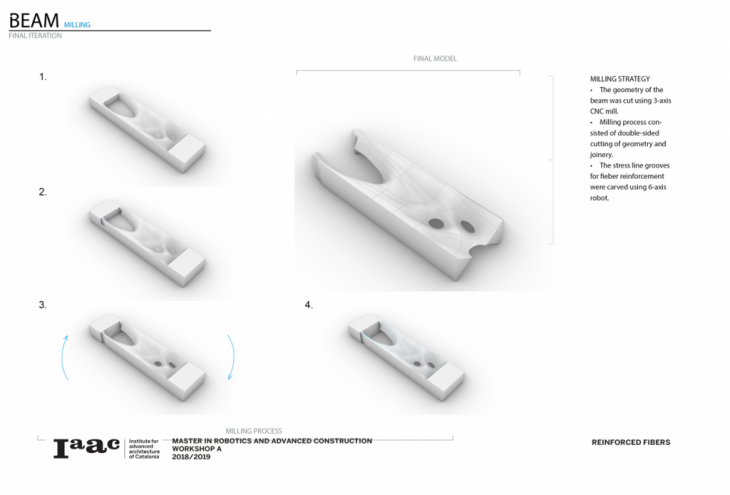
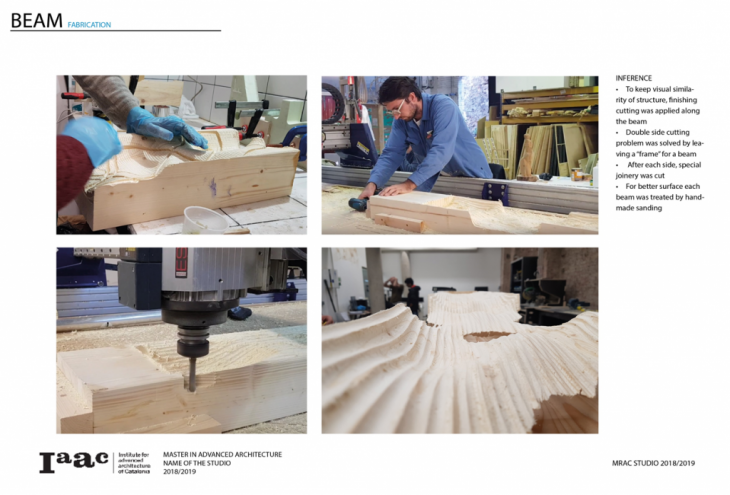
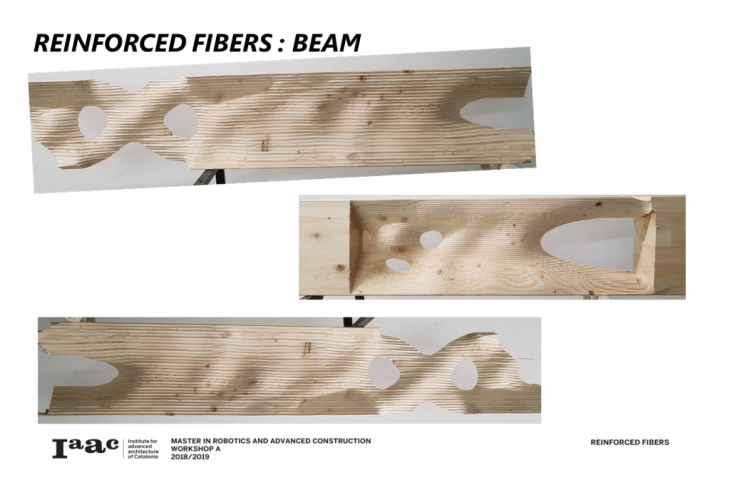
FIBER REINFORCEMENT
Along the key stress lines, the grooves have been milled using 6-axis robot. They have been filled with fiber resin as a reinforcement for the structure.
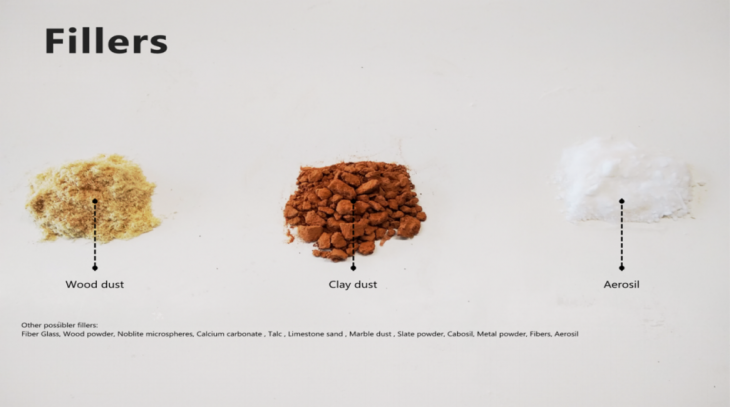
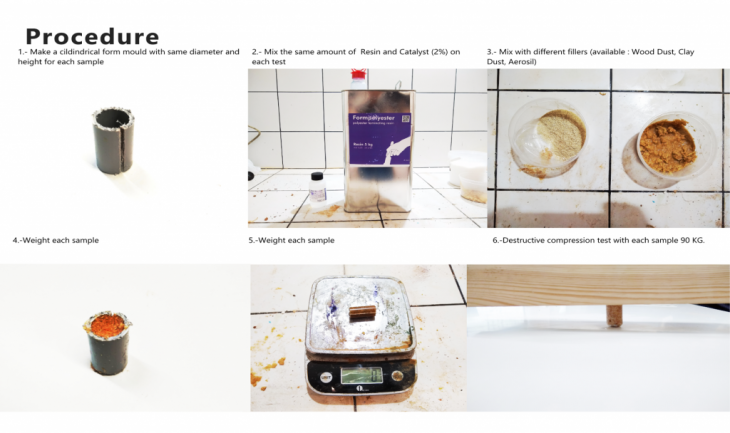
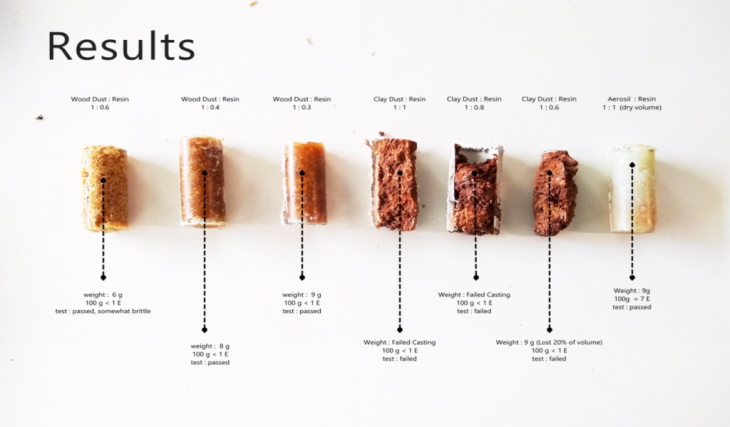
Tensile resin mixes a base resin with a 2% catalyst / hardener and glass fiber to improve tensile conditions as required. This resin was largely used in beams and slab.
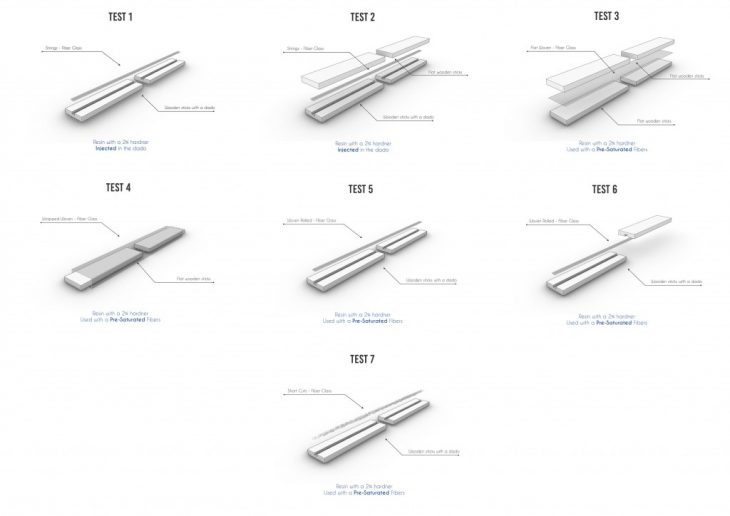
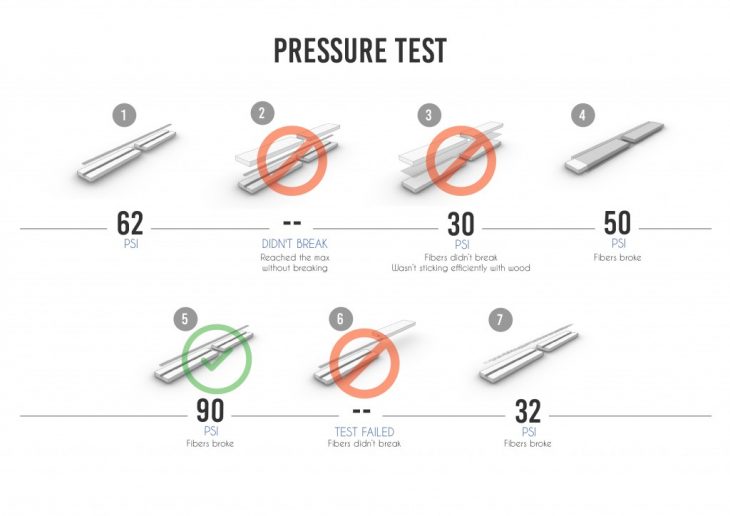
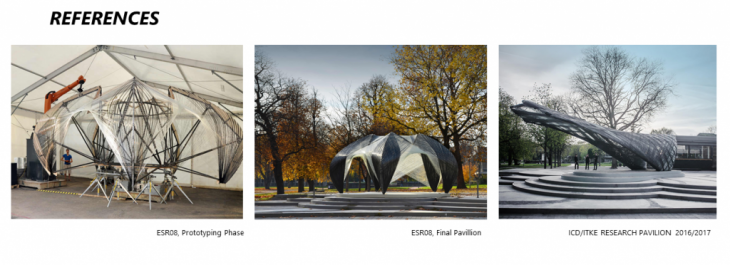
CONCLUSION
The project was an attempt to understand the implications of topology optimization of a standard beam structural system.
The optimization was possible with the use of a computational tools like millipede and Fusion 360 which helped identify the key load carrying parts in the structural system and optimized the material used in them by strengthening the key stress-strain zones and deducting the neutral areas resulting in a lighter structure.
The resultant design was fabricated using a 3-axis milling machine on timber sections.
Reinforced Fibers is a project of IaaC, Institute for Advanced Architecture of Catalonia developed at Master in Robotics and Advanced Construction (M.R.A.C.) in 2018 by:
Students : Subhash Prajapat, Jean-Nicolas Alois Dackiw, Andrzej Foltman, Ardeshir Talaei, Filip Bielicki
Faculty : Dir. Aldo sollazzo, Prof. Eugenio Bettucchi, Prof. Kunaljit Singh Chadha, Armin Akbari, Sujal Kodamadanchirayil
